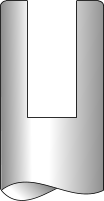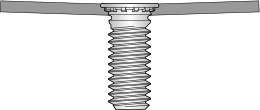


Self-Clinching Fasteners
Broaching Fasteners
Arnold & Shinjo Fasteners
Rivet Bushes
Rivet Nuts
Weld Fasteners
Cage Nuts
Blind Rivets
Inserts for Plastics
Inserts for Stone, Solid
Materials, Composites &
Sandwich Panels
Crown-Nuts
Fast-Con
Installation Equipment
Turned & Cold Formed
special parts made to order
Bespoke fastener design &
development
Fastener & Application
testing
Technical support
ISO 9001
RoHS|WEEE Compliance
REACH Compliance
Conflict minerals
Environmental Policy



SERVICES & SUPPORT







Clinch Nuts
Flush Nuts
Blind Nuts
Miniature Nuts
Nyloc Nuts
Locking Nuts
Floating Nuts
Flush Head Studs
Flush Head Studs for
Stainless Steel
Reduced Flush Head Studs
Thin Panel Non-Flush Studs
High Strength Studs
Thin Panel High Strength
Studs
Flush Head Pins
Flush Head Tapered Pins
Concealed Head Studs
Through & Blind Standoffs
Grounding Standoffs
Thin Panel Standoffs
Quick Release Standoffs
Keylock Standoffs
Concealed Head Standoffs
Flush Panel Screw Assembly
Panel Fasteners
Phillips Head Panel Fasteners
Low-Profile Panel Fasteners
Plunger Assembly
Self-Clinching fastener
Do’s and Don’ts
Self-Clinching fastener
problem solving guides
Self-Clinch in harder panels



NORTHERN PRECISION LIMITED
Specialist Fasteners
+44 (0) 1302 836010
sales@npfasteners.com




Contact us
You can contact us using any
of the methods below.
Unit 3 Durham Lane
Armthorpe
Doncaster
South Yorkshire DN3 3FE
England
+44 (0)1302 836010
sales@npfasteners.com


All rights reserved
© Northern Precision Ltd.
NORTHERN PRECISION LTD
Accreditations
Northern Precision Ltd operate a quality management
system in accordance with ISO 9001.
The ISO 9001 standard is recognised worldwide and
you can be assured of the benefits of working with a
certified company knowing that our management
systems are constantly assessed and approved.

Regulatory
RoHS|WEEE Compliance
REACH Compliance
Conflict Minerals Policy
Environmental Policy
Opening Hours
Mon - Thu
08:00 - 17:00
Fridays
08:00 - 16:30


Registered in England & Wales
Company number 3275391
V.A.T Registration number
GB 684 1384 17






Fastener is not
fully seated
Problem
Poor performance. Part falls out of panel.
Cause
The fastener is not installed fully. You must ensure that the fastener is installed so
that no knurling is visible or the head is flush with the panel.
Solution
Apply more force and or increase the length of stroke on the press so that the
fastener is fully installed. The shoulder of the fastener should be in contact with
the panel and the knurling should not be visible.



Fastener is not
installed squarely
Problem
Poor performance. Part falls out of panel.
Cause
The punch and anvil faces are not and parallel or the panel was not held
perpendicular to the anvil and punch during installation.
Solution
Make sure that panels are supported and held perpendicular to the punch and
anvil. Punch and anvil faces must be parallel to each other.






Large gap

Problem
Poor performance. Fastener installs off centre.


Fastener located incorrectly
in hole resulting in side of
hole shearing as fastener is
installed. Limited holding
power in pane.
Cause
The hole is bigger than specification.
Solution
Make sure the hole is within specified tolerance. Ensure that the fastener is located
squarely in the hole before applying pressure.

Problem
Tight Threads. Fastener cracked after installation.




Shank protrudes through
bottom of panel and is
deformed by anvil.
Shank is cracked and
threads are tight.

Fastener squashed
and bulging sides

Fastener will
not fully seat
Cause
If you try to install a self-clinching fastener with the wrong shank length for the
panel, as the shank bottoms out on the anvil it will deform and crack.
Solution
You must use a part that is suitable for the panel thickness or ensure that the
panel meets the minimum panel thickness requirement for the specific fastener.



Problem
Poor performance. Part falls out of panel.


Hole has been countersunk
to deburr the hole.
Cause
Countersinking or chamfering removes material which is required during the
clinching process. There will not be enough material left to displace and fully fill the
clinch feature.
Solution
Do not remove any material by countersinking or chamfering the hole. The
shoulder of the hole should be square. It is always preferable to install the fastener
from the punch side of the panel.

Anvil

Punch


Cupped head

Punch is too narrow
Problem
After installation the head of the stud, pin or
standoff is cupped and does not sit flush with the
surface of the panel.
Cause
The punch diameter is too small.
Solution
Use a punch with the correct diameter.
The punch should be wider than the head of the
fastener and ideally be the same diameter as the
anvil to avoid panel distortion.

Anvil


Flat Punch

Material is displaced
into the anvil instead of
fully filling the clinch
feature because the
anvil hole is too large.
Problem
Torque-out or push-out performance of fastener
is poor.
Cause
Anvil hole diameter is too large and is allowing
material to flow into anvil instead of the clinch
feature, or incorrect chamfered anvil is being
used.
Solution
Use an anvil with the correct diameter hole. Only
use a chamfered anvil where appropriate.

Anvil

Punch

Problem
Panel distorts when trying to install clinch studs in
thinner panels.
Cause
No chamfer on anvil. In thinner panels a chamfer
is required to accommodate the amount of
material that is displaced during installation.
Solution
Use the correct anvil type for the fastener and
panel thickness.
When installing our self-clinching fasteners, providing all technical requirements are met and installation
instructions are followed, you shouldn’t have any issues.
There are so many permutations of fastener type, size, panel material characteristics, hole preparation,
installation and tooling configuration that it is impossible to cover absolutely everything here. This is the
reason we state that the performance figures given for our fasteners are offered as guidance only.
Below are some of the most common issues encountered when installing self-clinching fasteners, along
with the cause and solution to ensure a successful installation an optimal performance.
If you are experiencing problems beyond the scope of this guide, please call our sales team for assistance.



Problem
Tight threads, poor performance. Part falls out of panel.
Cause
The panel is above the recommended hardness limit for the fastener.
Solution
For correct installation, self-clinching fasteners need to be harder than the panel
material they are being installed into. You must pay attention to the maximum
panel hardness limitation for the specific fastener type you are installing.



Fastener deformed,
bulging sides and tight
threads. Limited
displacement
of panel material.
A guide of Do’s and Don’ts when installing self-clinching fasteners can be found here.
Installing self-clinching fasteners in harder panel materials.
SELF-CLINCHING FASTENERS
SOLUTIONS TO COMMON PROBLEMS